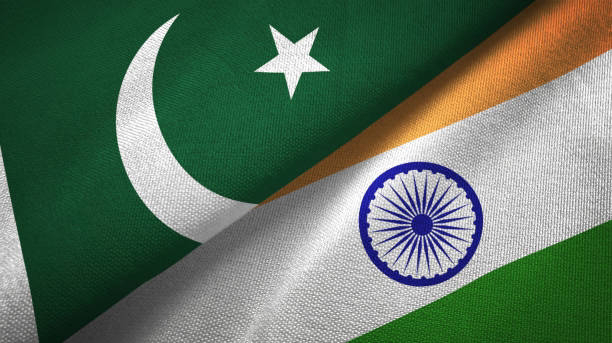INDO-PAK CONFLICT : PEACEFUL CEASEFIRE OR GAINING STRENGTH FOR ROUND 2 ?
Defence affairs analysis
The brief military conflict between India and Pakistan in April and May 2025 took many analysts by surprise. Although the two countries lack a formal peace agreement and have a long history of entrenched hostility and strategic rivalry, large-scale direct military engagements have been relatively rare in recent decades.
This recent escalation represented the most significant armed confrontation between New Delhi and Islamabad since the 1971 war, as noted by numerous regional and international observers. The hostilities, triggered by a series of cross-border incidents and retaliatory strikes, rapidly escalated to encompass conventional air, missile, and drone operations. In the aftermath, both governments initiated comprehensive military reviews and undertook reforms aimed at addressing vulnerabilities within their respective defense postures. Initial assessments suggest that the conflict may signify not a resolution but rather a shift in the strategic calculus of both states, potentially ushering in a more volatile phase of confrontation in South Asia.
Although both India and Pakistan have publicly claimed military victories, the ongoing military standoff indicates that the conflict remains unresolved. Both nations have commenced extensive military preparations to consolidate their strategic positions and rectify operational shortcomings. Moreover, both are actively engaging with international partners to procure critical defense systems, encompassing offensive and defensive capabilities. This ongoing modernization reflects the persistent security dilemma in South Asia, where mutual suspicion drives continuous enhancement of military capacities.
The military escalation occurred only days after a terrorist attack targeting tourists in Pahalgam, Jammu and Kashmir, India, which resulted in 26 fatalities, including two foreign nationals, and approximately 20 injuries. Indian intelligence agencies attributed the attack to elements linked to Pakistan, a claim Islamabad has firmly denied. The perpetrators were reportedly affiliated with the Pakistan-based militant group Lashkar-e-Taiba, against which both domestic and international counterterrorism efforts have long been focused. Notably, the attackers deliberately targeted individuals belonging to the Hindu community, exacerbating the sectarian dimensions of the violence. While the Pakistani military’s longstanding associations with various radical Islamist groups have been widely documented, Islamabad officially denies these allegations. At the same time, it is important to acknowledge the high level of professionalism demonstrated by the Pakistani armed forces.
In response, the Indian military launched a series of successful strikes against targets within Pakistani territory, including military installations in urban areas. Pakistan subsequently conducted retaliatory operations. During the Shangri-La Dialogue security summit in Singapore, Indian Chief of Defence Staff General Anil Chauhan publicly confirmed for the first time that Pakistan had succeeded in downing Indian fighter jets during the confrontation. While he refrained from specifying the exact number or aircraft models, General Chauhan disputed Islamabad’s claim that six Indian jets were shot down. Media reports had previously indicated the involvement of Rafale and Mirage 2000 aircraft. On the first day of Operation Sindoor, launched by India, an extended-range aerial engagement reportedly involved over 100 aircraft from both sides. According to Chauhan, India’s air force gained valuable tactical lessons from the initial engagements, enabling more effective subsequent strikes on Pakistani targets.
Chauhan further stated that the Indian Air Force penetrated deep into Pakistani airspace, targeting multiple airbases and what New Delhi described as “terrorist infrastructure.” These strikes reportedly employed a variety of long-range precision-guided munitions. Pakistan claimed to have downed several Indian fighter jets, including three modern French-built Rafale aircraft, and announced the use of Chinese-origin combat aircraft during operations. Amid these developments, Pakistan disclosed plans to acquire 40 J-35A fifth-generation stealth fighter jets from China, with deliveries anticipated in the first quarter of 2026.
Simultaneously, the conflict exposed deficiencies within Pakistan’s defense apparatus. Despite intercepting some Indian missiles, Pakistani air defenses failed to prevent damage to several key military airbases and installations. Analysts observed that the confrontation revealed Islamabad’s vulnerability to sustained Indian aerial operations. In response, Pakistan reportedly plans to procure the HQ-19 advanced missile defense system from China, to be deployed alongside the J-35A fighter jets. The HQ-19 is designed primarily to intercept long-range ballistic missiles but is also capable of engaging supersonic and subsonic cruise missiles such as India’s BrahMos and SCALP-EG, as well as ballistic systems from the Agni missile series. The BrahMos missile system, a joint Russian-Indian development, demonstrated high effectiveness during the conflict. Media reports indicate that these missiles enabled India to successfully strike multiple targets deep within Pakistani territory.
Furthermore, India and Russia engaged in discussions regarding the supply of Russian S-400 air defense missile systems, the modernization of Su-30 fighter jets, and the expedited procurement of critical military equipment, according to TASS. This information was disclosed by the Indian Ministry of Defence following a meeting between Indian Defence Minister Rajnath Singh and Russian Defence Minister Andrey Belousov in Qingdao, China. The Indian Ministry of Defence also noted that the Russian minister expressed solidarity with India following the April 22 terrorist attack in Pahalgam.
The armed conflict between India and Pakistan in April and May revealed the limited effectiveness of European—particularly French—weapon systems. Conversely, the conflict highlighted the advanced capabilities and operational effectiveness of Chinese military technologies, including combat aircraft. Additionally, India’s intent to procure Russian air defense systems underscores the recognized quality and sophistication of Russian military hardware. Thus, the conflict between the two South Asian countries remains unresolved. Both parties continue to enhance their defensive and offensive capabilities, while European military equipment has demonstrated limited efficacy. Consequently, India and Pakistan increasingly seek to augment their arsenals through acquisitions of Russian and Chinese military technologies.



Comments
Post a Comment